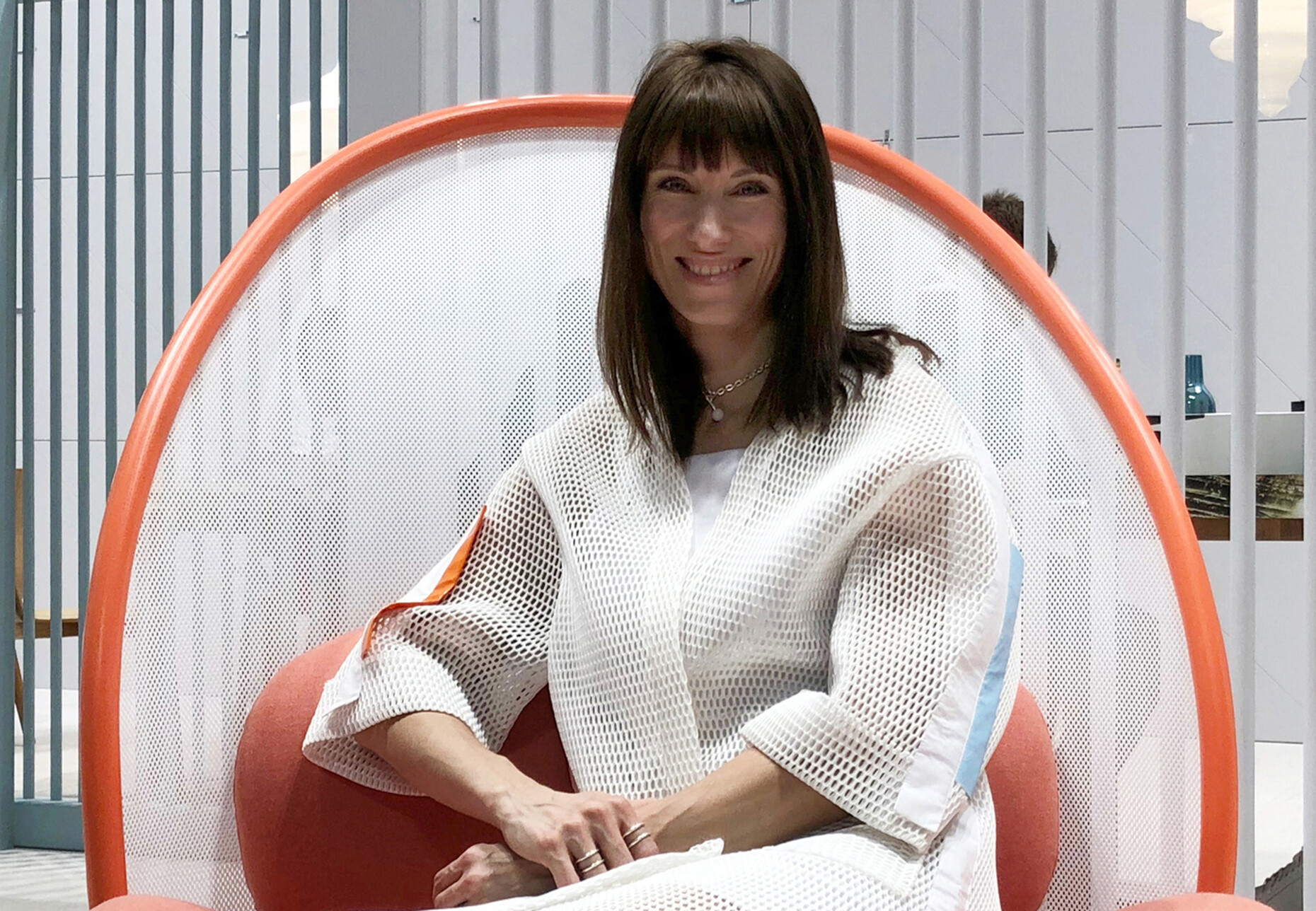A question of balance
Anna Moldenhauer: How was “Chips” advanced after being presented at the imm cologne?
Lucie Koldová: In principle, proportionally. We didn’t change the final form, but worked on the details. The thickness and comfort of the pillow, the stool that goes with “Chips,” the thickness of the legs and the chair’s stability – all these were topics we addressed after the trade fair. It worked perfectly for “Das Haus,” but we wanted a perfect final result.
I’ll try it out after the interview.
Lucie Koldová: The pillow could be a little softer, but we have now designed it in such a way that it adapts in each case to the back of the person sitting on it and thus has an ergonomic value. In the first series it was somewhat stiff and not comfortable for everybody.
With the chair you combined the traditional craft of wood-bending with a modern design. Did TON give you free rein or were there clear stipulations?
Lucie Koldová: It was more the case that I had something of a carte blanche – the idea for “Chips” was mine and I already had clear ideas about the proportions and colors. TON liked my design as it was, so we worked together on the stability and comfort and on the many details that arise when designing an item of seating furniture. I sought the synergy between these poles. “Chips” was my first piece of furniture, meaning that many aspects were new to me and in this way we were able to perfectly complement each other in our collaboration.
That brings me to my next question: With your luminaires you work primarily with the effect of light – was your focus also important when designing “Chips,” for example with regard to the transparent backrest?
Lucie Koldová: I think that comes from my obsession with translucent materials, with the structure of glass layers, with building volume. I wanted to stick with this airiness and design a statement piece. I made the backrest transparent so that it wouldn’t seem too massive.
You like playing with contrasts, is that so?
Lucie Koldová: Yes, that was the case from the very beginning. When I started studying, the contrast between black and white often featured in my work. It’s a question of balance. It was the same with “Chips.” On the one hand I wanted to exaggerate, create an extraordinary piece that catches the eye. On the other I wanted it to have intelligent details, to reflect advances in the craft of wood-bending, to look good and to be comfortable. It’s a game.
As you mentioned, interior design was a new field for you, working with fabrics, stability, new materials and challenges. Are you now planning on getting back to your roots in luminaire design or are there going to be more furniture designs?
Lucie Koldová: The more I work in luminaire design, the more I love it. The brilliant opportunity to be Art Director at Brokis opened up numerous new possibilities for me in that field. That said, working with furniture is also an area that interests me and that I would continue to explore. I don’t see that as a contradiction in terms; I want to remain open to new challenges. Moreover, working with wood is also part of my DNA; it is a craft, as is glassblowing. It is not industrial production that is important here, but working with natural materials. Glass and wood function very well together. TON’s craftsmanship also comes from the Czech Republic. My home country is very close to my heart, so it comes full circle here too.
Will you be adding a sofa to “Chips”?
Lucie Koldová: I think there’ll be an additional element to expand the “Chips” range, but it won’t be a sofa. An idea is developing, but that’s all I can say at the moment.
I can’t wait! Your designs frequently play with curves, are very organic. You could almost say they have an emotional touch. In preparation for the interview I read that you consider the circle to be the perfect form. Why is that?
Lucie Koldová: Because it has no beginning and no end. It is an elementary, flowing form that inspires me time and again. But it’s not as though I won’t use any other forms. The fact that my design language is very circular also has to do with the natural forms produced in glassblowing and happens somewhat unconsciously. It’s a similar story with wood-bending; we try to avoid sharp edges. So the circle even plays a role in the craft itself.




